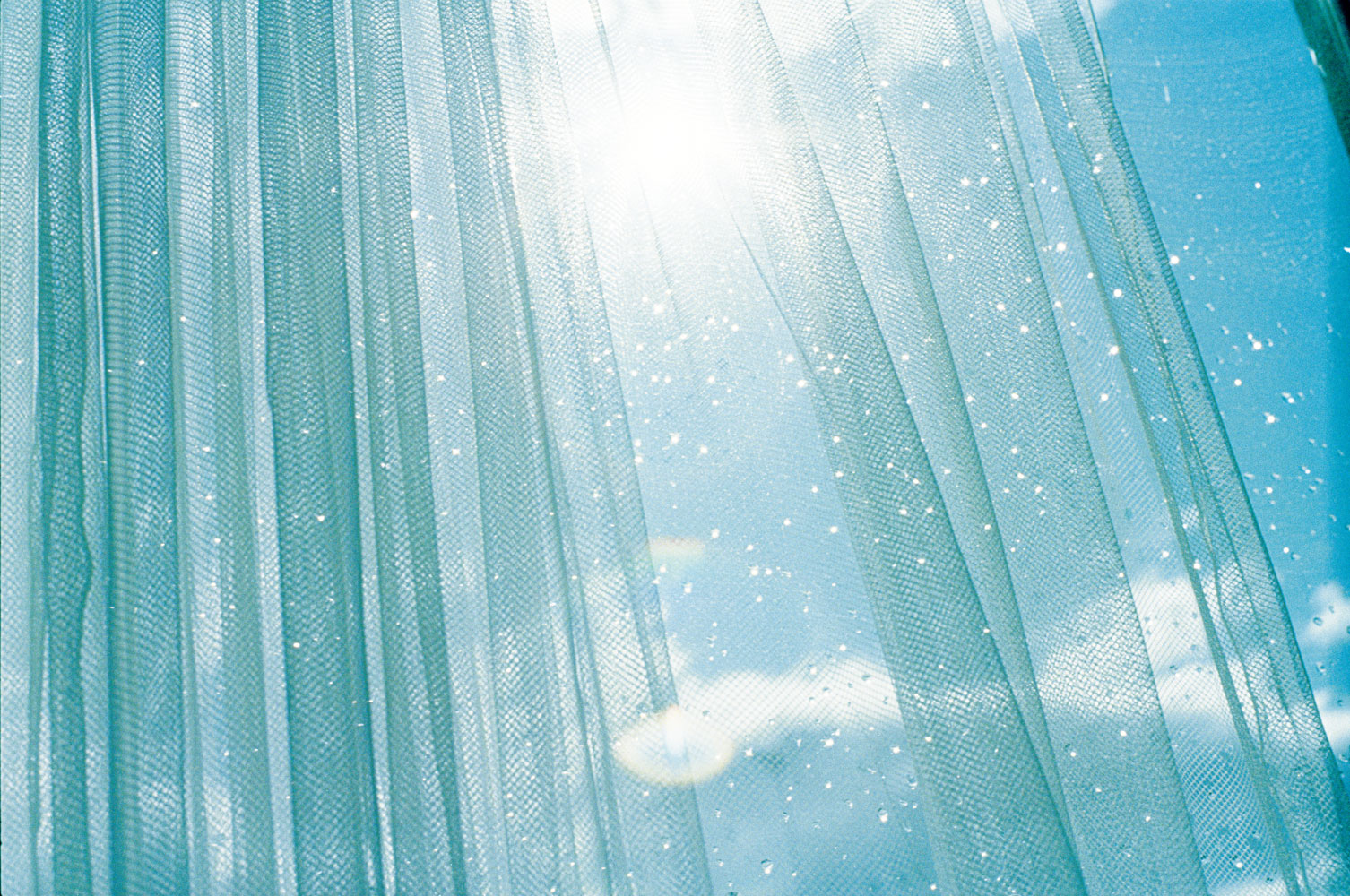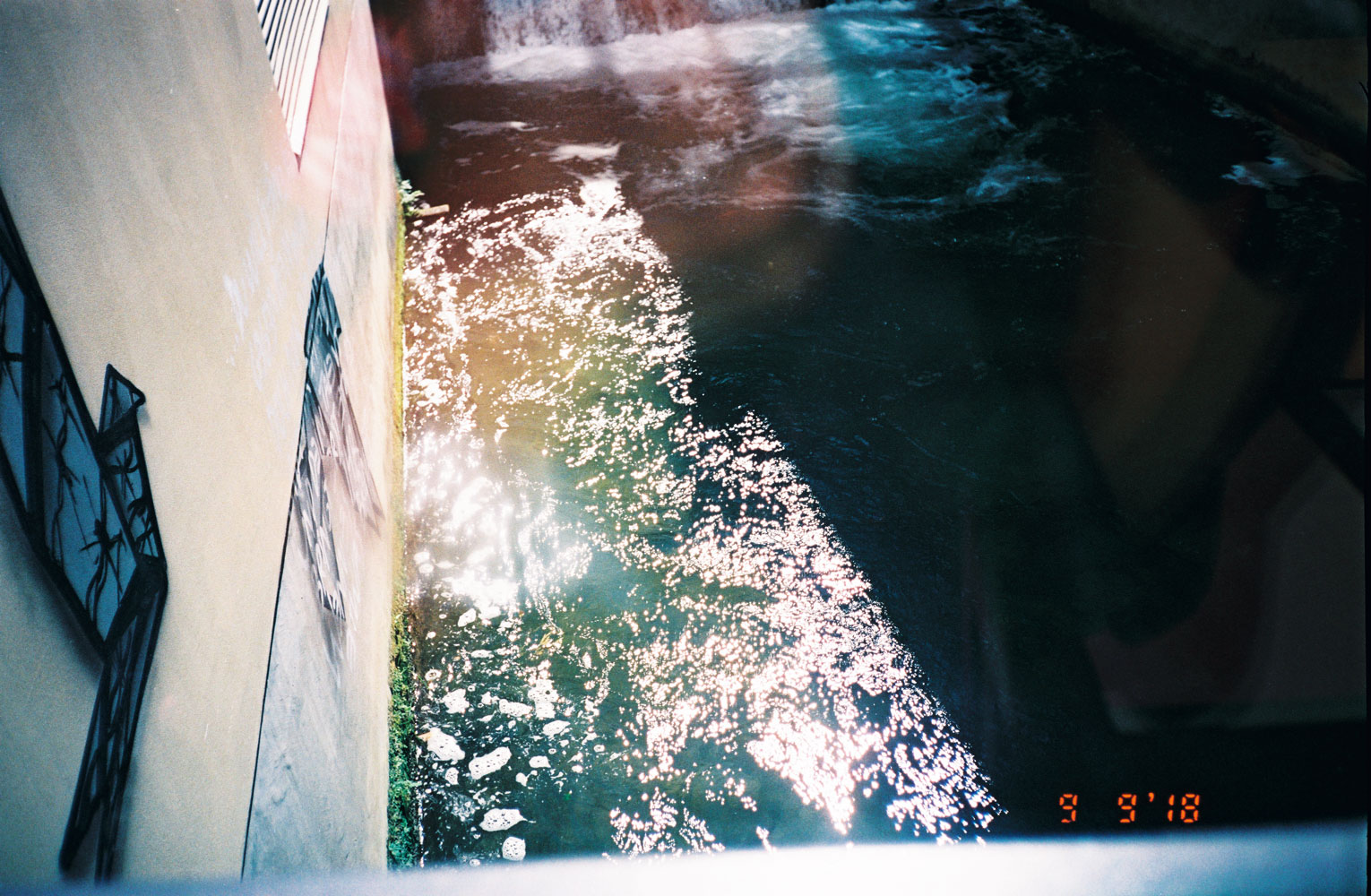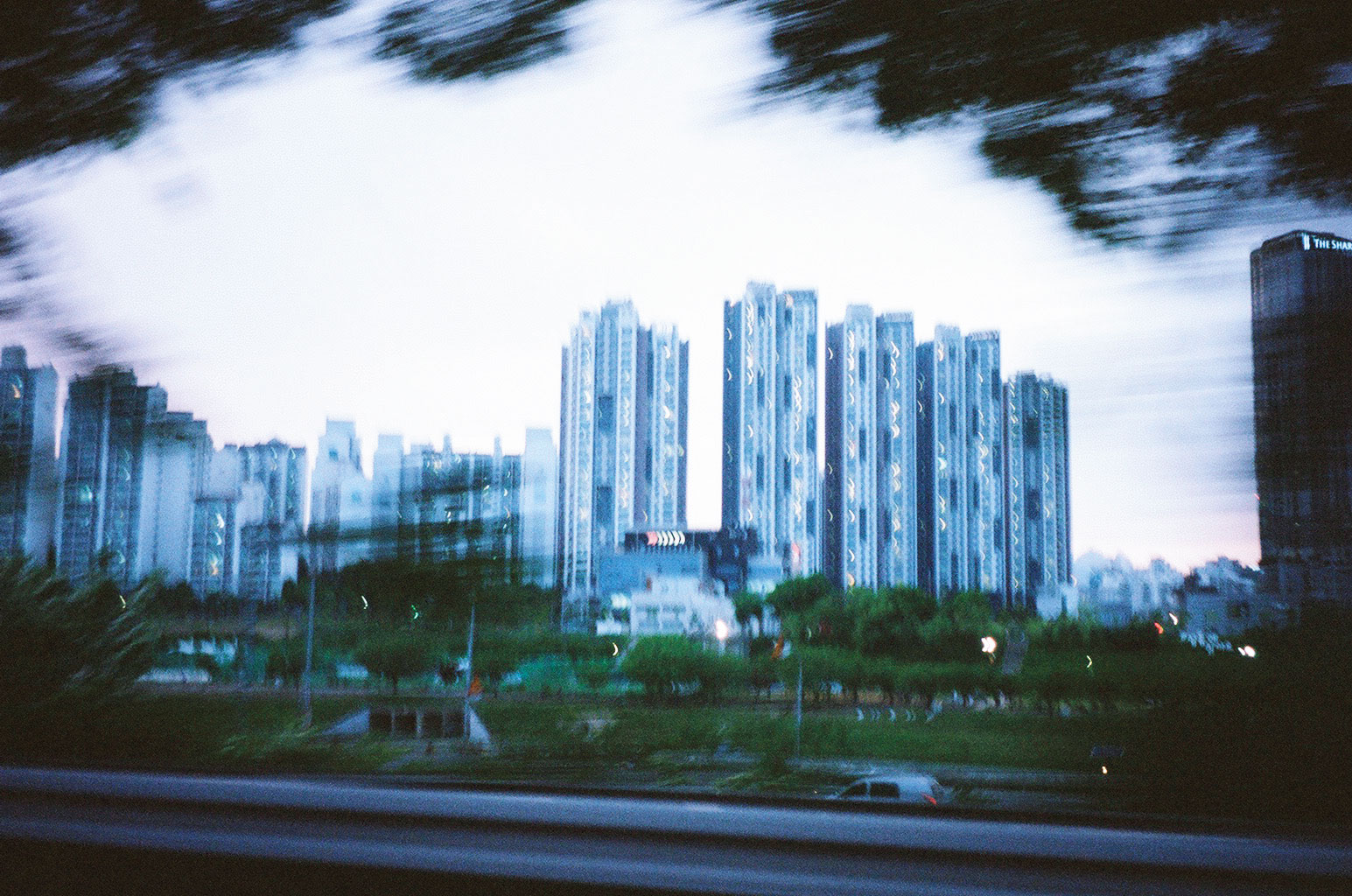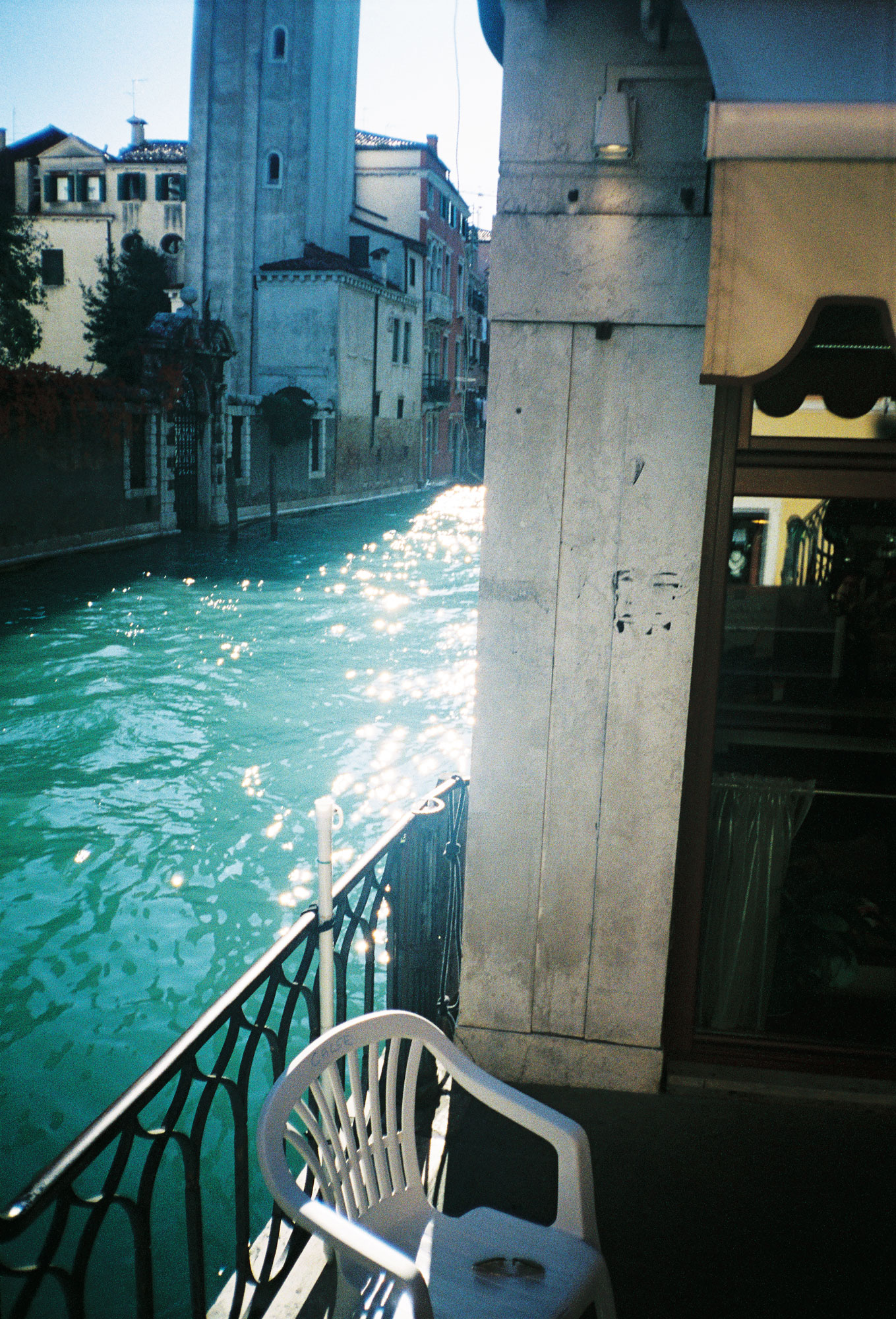FEATURE

Short series PENTAX Film Project Club House Diary vol. 5 Guest: Masumi Ishida
AUG. 18 2023, 12:00PM
Text / Akane Domae
BARFOUT!: When did you start photography?
Ishida: It was around when I was in junior high school, so I believe I was 13 or 14 years old. At first I was shooting with a LUMIX digital SLR camera. Originally, I enjoyed taking pictures with my flip phone. By having a flip phone, it put me in a situation where I could take pictures anytime I wanted to. It was easy for me to take pictures on the way to school, when I hung out with friends, at home, or anywhere else. Then, I started using a film camera at the age of 15 or 16. I was of the generation that just barely used the “Utsurundesu” disposable camera when I was in elementary school, but I bought one when I was in high school for the first time in a long time. After that, I started using a compact film camera that I had at home, and I bought my first one myself during the second half of high school. I was using a 35 mm compact film camera called “Macromax,” which was a new series of “GOKO” cameras released by Kyocera. I mean, I love the camera so much that I have a stock of them at home, and I still use them today (laughs). The camera doesn’t have any of the functions of so-called compact film cameras, which you can adjust the focus by half-pressing the button, and simply put, it has the same mechanism as the “Utsurundesu” disposable camera. You just have to press it and you can take the picture. The only functions are turning the flash on and off. The biggest point for me was the speed from the moment I wanted to take a photo to the moment I pressed the shutter, which is good thing in many ways. After entering college, I bought a Nikon F3, a Contax G2, and other single-lens reflex cameras that weren’t compact cameras.
Iikawa: You often include ghosting from your lenses in your works, don’t you? Like giving or taking out the shape of the aperture. You are very good with ghosting, but do you learn where they appear by looking through the viewfinder? There are times when you can’t see it, right?
Ishida: Yes, there are. When shooting in a backlit place, or in a place where flare or ghosting is likely to occur, I take pictures while thinking that they will appear, but those who take the pictures generally know what to expect, right? To prevent this, you can attach a lens cover, but at first I didn’t know whether to attach it or not. As I was shooting it, I was like, “Ah!,” but I didn’t think it was bad. In fact, it was more to my liking.
Iikawa: It adds a very nice accent, and you seem to know how to get the most out of it. I also thought it was great that you included it in a way that it doesn’t overlap with the main subject.
Ishida: For example, if you shoot in portrait position and the subject’s face is in the middle and you get flare on the face, you may not get anything in the picture. Rather than manipulating the flare, I know that the flare will appear, so I take several shots at different angles and repeat the process.
Iikawa: I design lens barrels, so I design them to avoid flare and ghosting.
Ishida: That’s right (laughs).
Iikawa: I love the way you show the ghosts in your photobook “Otototoi” with Kaho (shows her the photo). I know that the angle and aperture change the way it comes out, but you have a wide variety of variations.
Ishida: But generally, it’s all the same lens on the same cameras that produces the flare. I have a 50 mm lens on my F3 and I love the flare it gives off.
Iikawa: There are many young photographers who take pictures like you, as well as many old lens enthusiasts. We’re often told, “This is the kind of ghosting that makes this lens so good.” From our perspective, we had the impression that “ghosting = evil,” and we kept trying to make it so that it wouldn’t appear, but when the light is expressed so well with sensitivity, people say, “I like how this picture turned out.”
BARFOUT!: So is it better to have a little flare occur in the new lens you’re developing or……? Well, we’re sure it’s not that simple.
Iikawa: I can’t go into details (laughs). We wanted to make it a little different from the lenses that have been designed to maximize performance. This is because that is what we learned from looking at the photos of the young people. The point is how to use the tools, and what is available at the time is used well. And the person’s personality comes out in the way he or she uses it. So rather than just making a lens that takes beautiful pictures, we would like to make one that has a certain flavor.
Suzuki: What kind of camera would you like to see come out in the future?
Ishida: I like the act of taking photos itself, so I don’t have much of an inquisitive mind for machines at the moment. I guess I am satisfied with the current cameras. But I like taking snapshots, so portability is important to me. Also, I think many people would find it easier to use a camera that is easy to operate from the start, even in manual mode. I thought that if the camera has a function that allows the user to take all pictures in auto mode at first, but also allows the user to enjoy changing lenses, it would be widely popular. If it’s not easy to use as soon as you buy it, people have the impression that film cameras are difficult to use, so I think it’s very important for the first step to be able to use the camera as is. But there’s also something about having a camera that’s a little different from everyone else’s, right? Especially for kids in their early 20s who are interested in using a film camera.
Iikawa: I hope we can manage to make a camera that is easy to shoot and tinker with, but also a little different from the rest (laughs).
Ishida: It would also be nice if it wasn’t too big.
Iikawa: I see… If we prioritize compactness in the development process, there is nothing we can’t do, but this time, we are planning to adopt a manual winding mechanism. The feeling of that winding sensation is like shooting with film, isn’t it?
Ishida: Yesterday, I shot 30 or 40 pictures with a manual-winding F3 and the skin on my thumb peeled off (laughs). Because you have to wind it yourself the entire time. Please develop one that isn’t too hard (laughs).
BARFOUT!: Could you tell us again about what appeals to you about film cameras and film photography?
Ishida: When I first used the camera I bought myself in high school, it took me about a month to take 36 pictures. When I looked at the developed photos, some were not shot well and some were pitch black, but I remembered all of them and what I was shooting. I remembered the process before and after very vividly. It was like, “this photo is blurry, but I remember shooting there at that time,” or “I can’t see this photo because it’s backlit, but I know it’s of that girl.” I really enjoyed looking at the pictures I took as it was like checking the answers to a test, and that’s when I started using film regularly. I think film offers the timing to look back on it. With data and iPhones, you can take a lot of pictures, but there are surprisingly few times when you can look back at them. I might look back at photos from a trip, for example, but I may not remember the photos before and after. However, I feel shooting on film, developing it, and then looking back at the it and choosing from it, is an act that makes the memories grow richer, and I think this is something that only film can do.
PHOTOGRAHS BY MASUMI ISHIDA



(MAIN CUT)A shot from my photobook “Otototoi” with Kaho. This is a photo of the curtains in her home. It was used for the front cover of the photobook. (1) A photo from a trip to Switzerland. A shot of a small river in the city taken from inside the museum. The colors of the artworks in the museum were reflected in the rainbow of colors. (2) A photo from a trip to South Korea. The cityscape of Seoul taken from a cab. (3) A photo from a trip to Venice, Italy. Venice has canals all over the place, and I was taking pictures of the waterfront all the time.
INFORMATION OF PENTAX
smc PENTAX-FA50mmF1.4 Classic
The standard lenses are now on sale, which offer unique and enjoyable images as if they were taken with old lenses. By devising the position and size of the “iridescent flare,” which changes depending on the location of the light source and the subject, you can enjoy unique and one-of-a-kind renditions that cannot be experienced with lenses of the latest design.
www.ricoh-imaging.co.jp/english/products/lens/k/standard/smcpentax-fa50-classic/
【WEB SITE】
ricoh-imaging.co.jp
【Instagram】
@pentax.jp
【X】
@ricohimaging_jp
INFORMATION OF MASUMI ISHIDA
【WEB SITE】
masumiishida.com
【Instagram】
@8msmsm8




